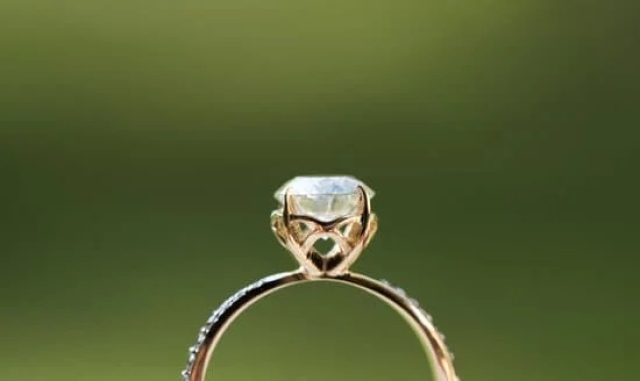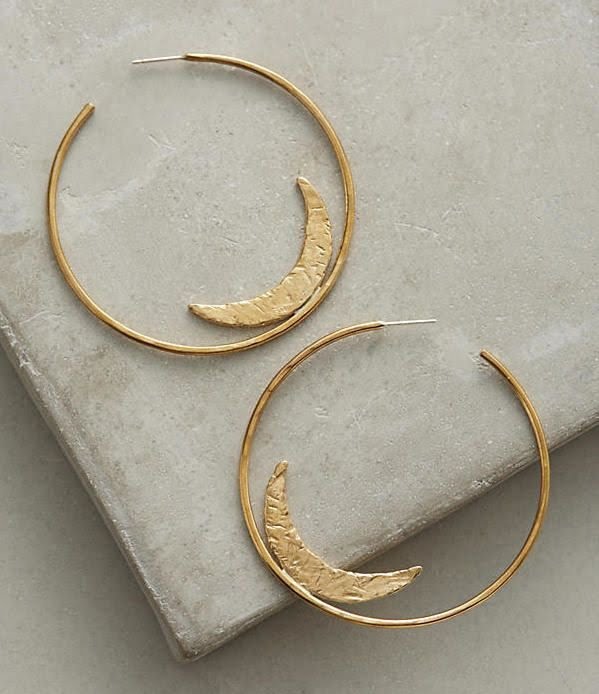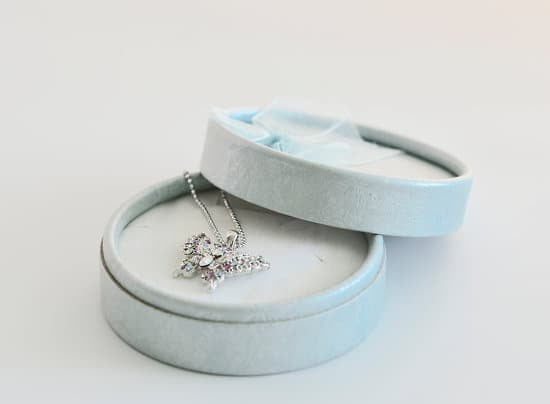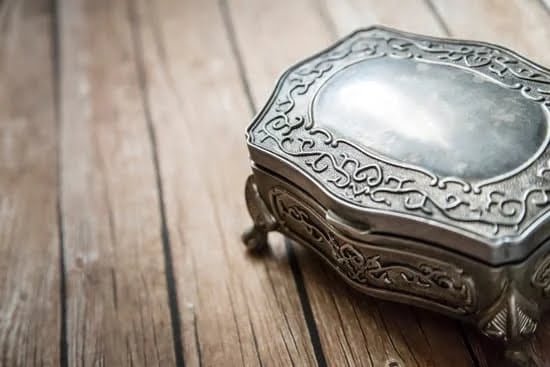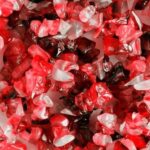Cleaning jewelry with ammonia is an effective and affordable way to make old and tarnished jewelry items look new again. The simple cleaning solution requires only a few household materials, so it’s easy to make a homemade jewelry cleaner solution using ammonia at home. Unfortunately, this method is not suitable for all types of metals, so it’s important to identify what type of jewelry a person wants to clean before making the cleaner.
Uses and Benefits of Ammonia
Ammonia is an excellent cleaning agent because it’s a powerful degreaser. It works quickly and easily removes dirt, grease, oil, and other pollutants from various surfaces including metals. This makes ammonia effective for removing tarnish on silver and other precious metals without having to scrub hard or use abrasive materials. This degreasing property also protects the metal from further damage while removing the tarnish.
Ammonia has high alkaline content which helps in loosening even the toughest residue on surfaces – such as on gems or diamonds – while maintaining its shine. The strong oxidizing properties help to cut through dirt and grime quickly, making the cleaning process easier than using other products that require more time and effort.
These benefits also cause ammonia cleaner not have any caustic effects on the skin when compared to other chemical based solutions used in home or industry for deep cleaning purposes.
Precautions When Using Ammonia
Although ammonia has many uses for effectively cleaning different types of surfaces, it should still be handled with extreme care due to its corrosive nature. Additionally, ammonia should not be mixed with bleach or any acidic substances due to their hazardous effects when combined togetherhese ingredients create toxic fumes and can cause severe burns if contacted directly with skin.
It’s also not recommendable to use this cleaner on certain types of jewelry including pieces made from pearls, coral or opals as these gems are highly reactive to acids found in ammonia-based cleansers that could damage them permanently if exposed too often or longer periods than necessary.
Before using this method cleaners must always ensure they follow safe practices by wearing protective lab coats, gloves, goggles and face masks; keep windows open; apply rubber mats around the area where your working with fresh fanning circulating proper ventilation ; keep all fire sources away; and completely rinse entire piece after cleaning process is complete before reusing them once again.,.
Benefits of Cleaning Jewelry with Ammonia
Cleaning jewelry with ammonia is an effective way to remove dirt and grime, as well as other materials that may be on the piece such as oils or sweat. Ammonia is a versatile cleaning product that can be used for many different things, from dishes to clothing. It’s also a great choice when it comes to cleaning jewelry because it is an excellent cleaner, gentle on metals and effective at dissolving dirt.
Using ammonia to clean jewelry is easy and inexpensive. It requires only a few ingredients – water, regular household ammonia, and an old toothbrush – that you can find in most houses. The preparation process involves mixing one cup of warm water with 1/4 cup of household ammonia in a container or bowl.
Once the mixture has been prepared, place the jewelry into it and let it soak for at least twenty minutes. Using an old toothbrush, gently scrub away any dirt or grime until your piece is sparkling clean again. When finished, rinse the item off with cold running water before drying off with a soft cloth or paper towel.
Another benefit of using homemade ammonia jewelry cleaner is safety; since this method does not use harsh chemicals like some commercial cleaners do, there’s no risk of burning or irritating skin if it gets on you during the cleaning process; neither does chlorine bleach which some people incline to use in producing their own cleaners.
Additionally, unlike chemical based cleaners that might damage soft stones such as opals and pearls, this simple method will cause no harm or discoloration leaving your jewels safe.
Different Types of Jewelry Suitable for Ammonia Cleaning
Ammonia is one of the most common and effective components for cleaning jewelry. Ammonia has the power to dissolve, lift and remove dirt and oils from all types of jewelry. This makes it an ideal option for creating a homemade jewelry cleaner. With a few simple ingredients you can create your own solution in no time.
The beauty of using ammonia as a homemade jewelry cleaner is that it is safe to use on different materials including diamond, gold, silver, pearls, turquoise and more. There are other substances that can damage certain types of gemstones or metals so it’s important to take note which piece suits best with this type of natural cleaner. It’s always advisable to check the instructions or spots on the product prior to using any kind of ammonia cleaner recipe.
When cleaning diamond rings especially with ammonia, be sure to scrub them gently using a soft toothbrush or ultrasonic machine. Important to remember when cleaning diamonds with ammonia is that they should be soaked in the liquid for 20 minutes followed by light scrubbing with a soft cloth afterwards. This helps break down grime attached to the ring without damaging its brilliant surface.
For items such as gold necklaces you don’t need to apply much pressure while brushing as gold is quite soft and gentle brushing will be sufficient in removing dirt from its surface easily and effectively. Silver jewellery such as pendants also require a light touch when cleaning with ammonia solution for proper upkeep.
Lastly, drops of mild meal soap together with little bit of ammonia can give pearls an enhanced shine after about 10-15 minutes in the mixture solution however not all gems are suitable for this process which is why checking before attempting these activities would be advised. By following these simple steps you’ll soon have sparkling jewellery again.
Safety Considerations for Cleaning Jewelry with Ammonia
When it comes to safely cleaning jewelry with ammonia, there are a few safety considerations that must be taken into account. First, any type of chemical should never be applied directly to the jewelry as this could cause damage or even an undesirable reaction with certain materials.
It’s also important to keep in mind that ammonia is a strong chemical and can cause serious eye and skin irritation if not used properly. Therefore, it’s essential to ensure you wear the right protective clothing, such as gloves and eye protection when mixing and using this ingredient in your homemade cleaner.
In addition to wearing protective gear when mixing and using your cleaning solution, it’s important to remember that some items may not be suitable for being cleaned with ammonia-based solutions. A general rule of thumb is that gems should never come into contact with ammonia as it can eat away at their delicate surface layers. Soft metals such as gold, silver, and platinum should also be avoided due to the potential for corrosion and discoloration.
As an added precautionary measure before use, you should test the cleaner on a small hidden area first before using it on the entire piece of jewelry. This will give you an indication of how safe your homemade solution is and whether or not it may damage certain types of stones or metals.
You should always follow safety procedures no matter what kind of cleaning method you’re using; however, extra caution is even more important when dealing with strong chemicals such as ammonia-based products.
Materials Needed for Cleaning Jewelry with Ammonia
Before attempting to clean jewelry using ammonia, a few materials are necessary. A small bowl and a few cotton swabs are essential items needed when cleaning jewelry with ammonia. A soft paintbrush can also be used to help dislodge dirt stuck around the crevices of delicate jewelry pieces. Additionally, it is important to have mild detergents available such as shampoo or laundry soap just in case the ammonia method does not work adequately.
Using Ammonia for Cleaning Jewelry
The most popular method of cleaning jewelry with ammonia involves filling a small bowl with one cup of water and adding two tablespoons of clear household ammonia. It works best if lukewarm water is used for the mixture.
Then, drop in the piece of jewelry being cleaned and let it sit in the solution for about five minutes before taking it out and wiping dry after rinsing it off with tap water. It is important to keep an eye on the jewelry while it is soaking and make sure that it does not stay in too long, as longer exposure to ammonia could cause damage to some types of jewellery.
Risks If You Clean Jewelry With Ammonia
Cleaning jewelry with ammonia has its risks especially if harsh versions like crystalized house hold ones are used instead of clear, liquid versions. For this reason, choose a mild product and always pay attention while cleaning delicate pieces of jewellery to not damage them through abrasions from possibly overly vigorous scrubbing that could scratch the surface or engravings on them.
Furthermore, sometimes certain types of jewellery such as those made out of leather or bone cannot be exposed to liquids at all; thus they must not come into contact with any kind of cleaner including one made out of homemade liquids such as ammonia-based solutions either.
Step-by-Step Guide for Making the Homemade Jewelry Cleaner Solution
Making your own homemade jewelry cleaner is a cost-effective and practical alternative to using store bought products. It is also often better for your jewelry pieces because it contains less harsh chemicals that could damage the finish of your precious items. This guide provides an easy-to-follow, step-by-step process on how to make a homemade jewelry cleaner solution using ammonia.
To start, you will need a clean container large enough to hold all of the liquid ingredients. Make sure that it has a lid so you can keep the solution stored when not in use. Next you will need to gather your materials, which include two tablespoons of ammonia and one cup of warm water. Once you have collected everything you may move on to assembling your DIY jewelry cleaner.
To begin mixing your ingredients, pour the warm water into the container first, followed by the ammonia. Put on your lid and shake the container vigorously for about one minute until all of the ingredients have been evenly mixed together. The mixture should form a thin yet easily spreadable consistency and appear milky white in color. You are now ready to start cleaning.
The best way to use this homemade solution is with a soft brush or microfiber cloth as very little pressure is needed for effective results. Dip either material into some of the mixture then rub it onto any desired parts of your items marked with dirt or tarnish gently without applying too much pressure that could cause damage. The best part is that this solution works on silver, gold, bronze, and more.
When finished simply wipe excess off with a dry cloth and admire its shine. Be sure to return remaining liquid back into its container after done – never discard it down sinks or toilets as this could be hazardous due to its contents.
Step-by-Step Guide for Cleaning Jewelry with Ammonia
Cleaning your jewelry at home is a safe and effective way to keep it looking its best. Using ammonia as a homemade jewelry cleaner can be one of the most effective methods for removing dirt and grime from your jewelry. The following step-by-step guide will help you get the most out of using ammonia to clean your jewelry.
To start, gather all of the materials that you need for cleaning your jewelry with ammonia – this includes a small bowl, cotton swabs, a soft cloth, water, and ammonia. Once you have all of your materials ready, fill the bowl with warm water and add two or three drops of ammonia into it. Make sure that the water is not too hot or too cold.
Then dip the cotton swab into the solution and gently dab it onto the surface of the jewelry. You should do this in gentle circular motions until all of the dirt and grime has been removed from your piece.
Next, rinse off any leftover solution thoroughly by submerging your jewelry in a container filled with clean warm water. Then use a soft cloth to dry off any residuethat remained after rinsing – this will ensure that no water spots are left on your pieces once they’re completely dried off. Finally, inspect each piece for any remaining dirt or grime before storing them away properly – this will help prevent further damage and discoloration on your precious accessories.
Cleaning jewelry with ammonia may sound intimidating at first, but if done correctly it can provide amazing results. It is important to remember to always be gentle with how you clean each piece and take extra care when submerging them in any liquids during cleaning or storage as this could cause irreparable damage to certain jewels (such as opals).
Additionally, make sure that you only use mild detergents when pre-soaking items before using this method in order to avoid any streaking or pitting that could occur due to harsh ingredients found in some soaps or cleaners.
Troubleshooting Tips for Cleaning Jewelry with Ammonia
The use of ammonia in cleaning jewelry can be quite effective and make the task of keeping your jewelry clean much easier. Ammonia is a powerful cleaner that works to break down dirt and oils that accumulate on the surface of jewelry over time.
It is important to use caution when using ammonia for this purpose, as overuse or improper usage can damage delicate pieces of jewelry. Here are some tips for optimizing your cleaning experience when using ammonia to clean jewelry.
Firstly, it’s important not to use any more than is needed. In trying to achieve a sparkling shine, dilute ammonia at a ratio of one teaspoon per cup of water should be used.
This concentration should be used on both silver and gold as well as pieces that may have stones like diamonds or pearls attached, although it may be safest to test an unknown piece on an inconspicuous area first before attempting full coverage with the diluted solution on the entire piece.
As too much ammonia can discolor certain jewelries, it is best left to the professionals if you are uncertain how much solution to use or what type of cleaning agent would work best for your piece.
Once you have prepared the cleaning solution, submerge the jewelry in question into the mixture making sure it has adequate time (at least ten minutes) for the dirt and oil residue to break down and dissolve away from each piece you’re cleaning before wiping off with a soft cloth or cotton pad.
You can also opt for an ultrasonic machine which vibrates at such a high frequency that allows dirt particles or debris stuck between deeper delicate crevices in necklaces & other pieces becomes much easier to access and exfoliate from their surface – thus eliminating possible scratches from manual handling all together.
For items relying heavily upon intricate design work, like antique engagement rings and bracelets, these should always be hand-washed with lukewarm water instead; using ammonia here runs the risk of corroding more detailed elements due its higher alkaline content – strength being one thing but somebody’s forebear’s sentimental heirloom?
A different matter entirely In conclusion, while using diluted ammonia as a homemade cleaner is effective at breaking down dirt and oils on jewelry surfaces; proper cautions still need to be taken depending on forms/materials encountered during each unique job done and only then will you avoid potential mishaps caused by negligence in caring over beloved objects.
Alternatives to Cleaning Jewelry with Ammonia
Jewelry cleaning can be a difficult and intimidating task. The danger of harsh chemical solutions damaging delicate pieces can send even the bravest DIY enthusiast running for the door. All the same, it is possible to clean jewelry safely with a mixture of household products including ammonia. While ammonia has proven to be an effective way to clean certain types of jewelry, some materials require other forms of treatment.
When attempting to clean your gold jewelry using this method, it is important to make sure that you dilute the ammonia solution properly in order to avoid over-exposure or harm to your pieces. Adding 1 part of ammonia to 3 parts water creates an ideal solution for gently cleansing gold jewelry without causing any potential damage.
When cleaning silver and copper pieces, this diluted formula remains the same; however, these solutions should not be left on the metals after application, as they risk staining silver or oxidizing copper depending on whether sealed or antiqued finishes were used on them Respectively.
Though most diamond jewelry is safe to clean with an ammonia solution, caution should still be taken when dealing with rings featuring stones like opal or turquoise which can absorb liquids and cause damage if exposed for too long waiting periods. For these types of jewels many professionals recommend soaking them in lukewarm soapy water with no more than a few minutes before rinsing them off with cold water and a soft brush in order to remove debris.
While toothpicks help maneuver dirt out from crevices and complex patterns within quartz and other gems they should never be utilized on soft stones such as turquoise where they could cause scratches or chip away at the stone itself. Ultimately there are several ways you can approach different varieties of cleaning while taking into consideration what material you’re dealing with so experiment responsibly beforehand in order to find out what works best for each one.
Conclusion
Using ammonia to clean your jewelry is an effective way to get rid of grime and dirt buildup on various pieces of jewelry. Not only does it eliminate dirt and grime, but the ammonia can also restore a once-dull piece of jewelry back to its original sparkle and shine.
Depending on how soiled the jewelry is, you may have to use a stronger or weaker solution of ammonia mixed with water or soap water in order to effectively remove all impurities from the jewelry. However, it’s important to always keep in mind that certain metals and gemstones don’t react well with ammonia, so do make sure you know what kind of jewelry you are cleaning before going ahead and trying this method.
Ammonia does work fast on most types of jewelry, especially silver-based ones like sterling silver or plated silver varieties. Silver is one metal that reacts immediately if placed in an ammonia bath and will usually bring out the shine almost instantaneously; this effect is further amplified when used according to our homemade cleaner recipe which calls for using both white vinegar and baking soda as additional ingredients – ensuring a thorough cleanse every time.
Gold-based varieties similarly shine up quickly after being exposed to an ammonia bath; however, you must be careful not to leave them too long as gold can easily become discolored if left too long in strong solutions.
Overall, using an ammonia-based cleaner for your Jewelry is an easy method for getting them back into their former pristine condition doing the job no matter what type of material your particular jewel is made from. Be sure always to read labels beforehand though, as some pieces may not be compatible with this particular cleaning solution requiring alternate methods that aren’t based around chemistry.
That aside, homemade cleaners based on Ammonia are considered perfect for restoring most forms of Jewelry back into shiny conditions provided precautions are taken such as minimizing contact time within strong solutions.

Welcome to my jewelry blog! My name is Sarah and I am the owner of this blog.
I love making jewelry and sharing my creations with others.
So whether you’re someone who loves wearing jewelry yourself or simply enjoys learning about it, be sure to check out my blog for insightful posts on everything related to this exciting topic!

